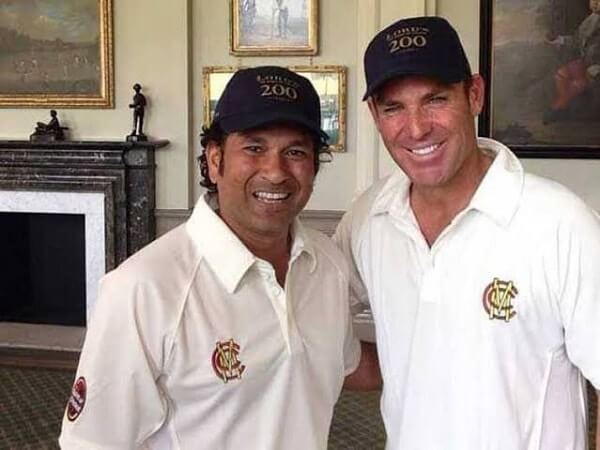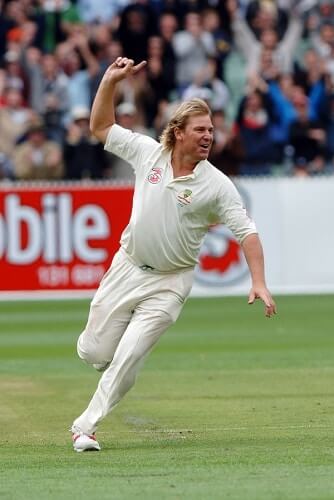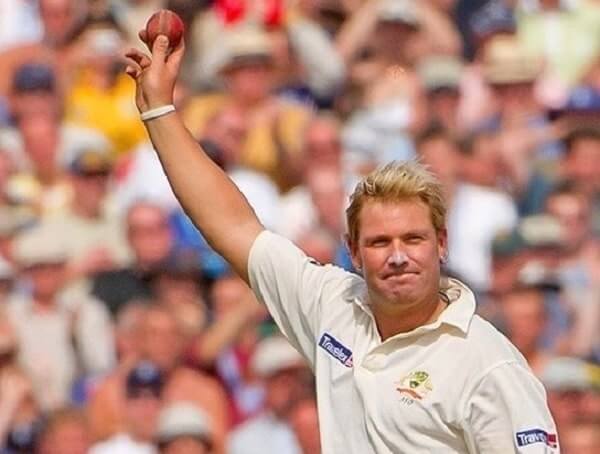Shane Warne was an impact player – in the mould of greats from other fields of sport – like Muhammad Ali, Michael Schumacher, Tiger Woods and Lance Armstrong. Like these sportsmen, his flamboyance and personality attracted new followers to the game. Again, like them, he was not without his faults – if anything, they just added to his persona.
Warne started his career around a time when the winning formula in cricket was a diet of hostile fast bowling. His flippers were to leg spin, what reverse swing was to swing bowling. He did not just have strong self-belief – he seemed to ensure it percolated to the entire team. Famously called “the best player never to have captained Australia”, he demonstrated his captaincy skills in the inaugural edition of the IPL by leading an almost ragtag team of inexperienced youngsters to an improbable tournament victory in 2008.
However, it was his on-field performance that saw him named as one of the five Wisden Cricketers of the Century, the only specialist bowler selected in the quintet, and the only one still playing at the time.
Here’s my pick of his top five performances, in chronological order.
1992: Colombo
Australia had begun to emerge from their horrific form in the 80s, as a force to be reckoned with. However, their overseas track record, especially in the subcontinent’, was still poor. It was against this backdrop that they went to Sri Lanka in 1992.
Sri Lanka got into the fourth innings needing a paltry 181 runs to win the match. They were expected to win in a canter with a batting line up that boasted of the likes of Mahanama, de Silva, Ranatunga and Atapattu.
A spirited performance by the Aussies got the chase to the wire at 147-6. However, Greg Matthews, who kept the Aussies in the hunt was tiring and the fast bowlers were not effective. There were not enough runs to play with and Sri Lanka was still the favourites to win.
Alan Border, in a stroke of luck / genius tossed the ball to Shane Warne. Incidentally, Warne’s test average at that point in time was 1 for 350+, including an embarrassing 0 – 107 in the first innings.
What followed was too quick to detail. Warne wrapped up the last three wickets before the blink of an eye and heralded an Aussie victory, which was the beginning of a decade of dominance on all surfaces.
Warne’s figures at the end of the second innings read 5.1-3-11-3.
A star was born.
READ ALSO: Teen cricketer Harjas Singh has what it takes to play for Australia

1996: World Cup Semi Final, Mohali
The mighty West Indies was a huge force to be reckoned with, especially in the shorter format. The semi-final threatened to finish very early with the Aussies reduced to 15-4 in less than 10 overs. Somehow, they cobbled together an apology of a total, 207, on a true wicket.
With hardly a total to defend, the best Australia could do was be restrictive but even that tactic was not working. The West Indies cruised to 165-2 and with 10 overs remaining, less than 50 runs to get and a decent batting line-up still to come, West Indies looked set to enter the final.
However, Mark Taylor, the Aussie captain had something up his sleeve. He had reserved the bulk of Warne’s 10-over quota for the business end of the innings. It was unnatural in those days for a spinner to bowl at the death. Such was Taylor’s confidence in Warne, that he had kept his weapon of mass destruction under wraps for most of the first 40 overs.
Between the 44th and 48th overs, Warne ran amuck. Aided by an umpire who understood spin bowling (there was no DRS then), Warne let it rip. Gibson was out, looking for the cut and completely misreading the flipper; Adams desperately tried to sweep a full and fast delivery only to trap the ball with his toe and be plumb in front of the wicket. Bishop let the pressure get the better of him: Warne’s deliveries always picked up pace AFTER pitching, and Bishop was just not good enough to bring the bat down soon enough, before the ball thudded into his pads.
In 5 overs, Warne claimed 3 wickets and what looked like certain defeat began to appear as a shock upset. Australia pulled off an improbable victory.
1999: World Cup Semi Final Birmingham
If the Mohali encounter was considered close, then the next edition of the World Cup semi-final was even more theatrical.
Australia’s campaign threatened to end prematurely with indifferent performances early on. However, buoyed by some inspired performances by Glenn McGrath and Steve Waugh, Australia managed to reach the semi-final after a near-death encounter against South Africa in the playoffs.
South Africa and Australia were the two best teams and the fact that they were going to clash again in the semi-finals, meant that a high voltage encounter was on the cards.
Batting first, the fabled Australian line-up could not hold a candle to a motivated and hostile South African attack.
Not able to last 50 overs, Australia set up a paltry target of 214.
South Africa had a business-like start, rattling up nearly 50 runs in the first 10 overs. 214 was looking ridiculously easy.
Wickets were needed – and quickly. Waugh had no choice but to turn to Warne.
The chemistry between Warne and Waugh was like oil and water – there was no connect. However, the stakes here were not personal. This was the World Cup.
Between overs 12 and 15, Warne conjured up a magic that is talked about to this day.
He bowled to Gibbs, a ball that drifted and pitched outside the leg stump. It grabbed the footmarks and suddenly moved on steroids, turning prodigiously and clipping the off stump. Gibbs initially did not leave, refusing to acknowledge that he was bowled (much like Mike Gatting several years earlier).
Next was a left hander, Gary Kirsten. Warne bowled a similar ball that had done Gibbs in. Kirsten tried to sweep, completely missed the turn and pace, and saw his off stump gone.
Next came Cronje. The ball pitched up near the toes. Cronje, attempting to turn it onto the on side, edged to the glue-like hands of Mark Waugh.
3 wickets in 8 balls.
Warne had given his team more than just a sniff from a completely hopeless position.
He galvanised the rest of the team to a point where the great Aussie fighting spirit surfaced. It was still not good enough for outright victory though, the match ending in a tie.
But Warne’s belief turned the match around on its head.
The South Africans earned the “chokers” tag after this match. The pressure put out by Warne was just too much.
2005: Ashes Series
The 2005 Ashes series is considered the greatest ever. England managed to reverse the trend of being at the wrong end of a sledgehammer for more than a decade. They did it by blunting some of Australia’s sharpest weapons – Gilchrist, Gillespie, Hayden and to an extent Ponting. With so many weapons rendered innocuous, England should have won the Ashes 5-0; instead, they won 2-1, in no small measure due to Warne.
Warne was just coming off a very public and messy divorce, and the general feeling was that his preoccupation with personal matters would impact his performance. Maybe it did – if he did not have to handle the divorce during this series, who knows, he may have taken another 20 wickets and Australia may not have lost the Ashes after all.
Warne demonstrated at this time, an ability to completely switch off from his personal issues while up against his old enemy.
He captured 40 wickets at an average of less than 20 apiece. Between him and the next bowler on the league table (on either side), there was daylight. Flintoff, the next highest wicket taker, tallied 24.
It was a pity that for once, the rest of the team could not rise up to Warne’s heroics, but cricket tragics were treated to a crick fest that they still talk about.
READ ALSO: Vale Shane Warne, the greatest of them all

2006: 2nd Test, Ashes, Adelaide
It is never too late for an encore. By now, Warne’s career was storied and envied. But one task still remained. The Ashes urn was no longer in Australia.
The 2005 Ashes defeat probably spurred Warne (and perhaps some others) to stick around longer so as to bring the urn back Down Under. However, just a victory was not going to be sufficient. The Aussies had their sights on a 5-0 whitewash since only that kind of a result would be a fitting enough response to the unexpected defeat in 2005.
Everything was going according to plan in the Gabba test which the Aussies won comfortably.
However, the English team was not a push over by any stretch of the imagination. In the second test at Adelaide, they started very strongly posting a mammoth 500 plus total in the first innings. As if to rub salt to the wounds, they declared their first innings at 551, casting doubts about the ability of the ageing Aussie attack to dismiss them twice in a test.
Since Adelaide has traditionally been a flat batting wicket, the Aussies responded well and notched up their own 500 plus total – which nevertheless, was not good enough to overhaul England’s total.
Warne had been savaged for 1 for 167 in the first innings. Kevin Pieterson, his old buddy, was particularly ruthless as he helped himself to a first innings score of 158.
However, too much time had elapsed during the sides’ first innings. HoSuch a high scoring match meant that England entered day 5 at 59-1 and on the back of a small lead of 40 or so. The match was expected to peter out to a draw and with three tests still remaining to go, the Ashes series was thought to be very much alive.
Warne had other ideas. The old showman, who had already announced his retirement, proved that it’s never over till it’s over. With England wobbling after two early setbacks, he reverted to his attacking line from over the wicket and bowled Pietersen round the legs with a prodigious first-ball leg break that pitched in the rough and exploded on to the off stump. It was a seminal moment, and England’s resolve crumbled in an instant.
Pietersen had gone for 2, England had lost three wickets for four runs in three overs, and they had absolutely no place to turn. Warne took 4-27 in an unbroken 26-over spell and had a hand in the dismissal of Andrew Strauss and Ian Bell as well.
In a single session, the entire match was turned on its head and a seemingly dull draw ended in an exciting climax.
Warne always looked for a way to win, irrespective of the position. In doing so, he glamorised a game which has always needed to look at ways to reinvent itself and keep viewership interested.
While Warnie’s record will speak for itself, his contribution to the game will be more than mere statistics. He brought flamboyance to a game played over 5 days – which even today, more than half the world finds difficult to understand or empathise.



